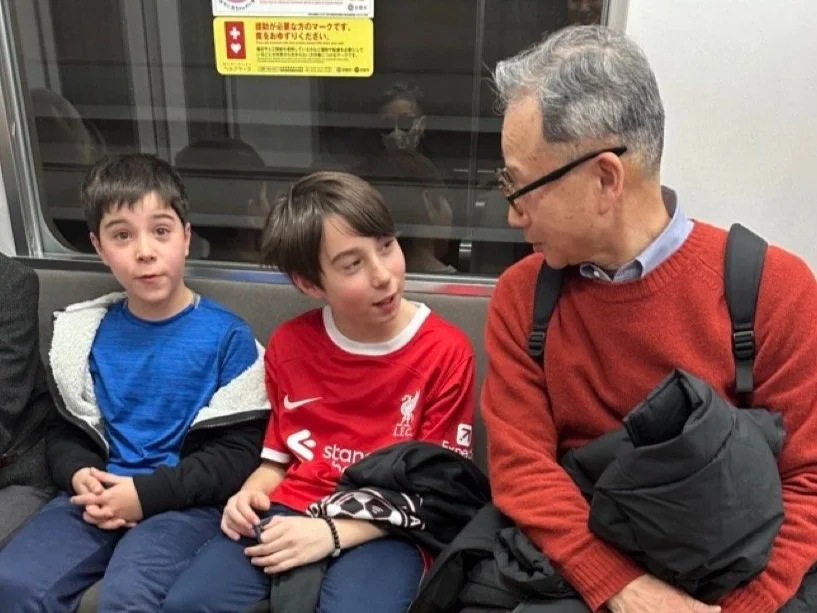Quality Conversations
The differentiator for more intentional, responsible travel may just be conversations (credit to Jiro Ito for this idea).
20+ years ago I studied Japanese in college. My class was at 8 or 9am every day, five days a week, for four years. I fell in deep with Japan, spending a semester in Tokyo and minoring in Japanese Language and Culture.
Sadly, with atrophy the language faded from my brain. It’s been a dream to come back to this striking country with Matt and the boys, but I didn’t realize how frustrating it would be to know that the Kanji and vocabulary were imprisoned in my thick skull.
Nevertheless, one of my best finds in Kyoto was the language class offered at the Kyoto International Community House, taught by volunteer teachers (or rather, they charge $3.60 per 90-minute class). As frustrated as I was to not have the words I wanted to get around town, at least I had a great time with my teacher Hiromi. With my broken Japanese and her decent English we managed to go deep.
A few surprises from my conversations with Hiromi:
A few decades ago when she was in her late teens she was required to study the formalities of a tea ceremony, how to cook, clean, and arrange flowers. This is no longer common practice for young women, but Hiromi and her daughter together go to a bi-weekly tea ceremony class (with a sensei who is a Czech woman, the wife of a Buddhist monk! Don’t you want to meet her?). They love it for the meditation and quiet, and the subtleties of the practice such as the changing up of the tea and flower selection for each season.
Tourists of all stripes come to visit Kyoto’s shrines and temples, including young Japanese couples from across the country. I’ve seen many foreigners rent a kimono and get dolled up for the visit, which feels like a strange act of dress up and appropriation. But the surprise here is that the Japanese tourists do the same! She called it something similar to cosplay. Wha?
Religion is pretty light in modern Japanese culture, despite the many Buddhist temples and Shinto shrines. People visit for the beauty and are compelled to offer a prayer while there, but it is not a major part of the modern belief system. And yet, she also visits her grandparents’ gravesites at a Buddhist temple every month with her parents. It was very difficult to try to explain our family’s distant relationship with religion, while also showing her photos from Geoffrey’s milestone ceremony with his mentor from the Ethical Society.
Normal life stuff: she goes out to hookah bars with friends and bought her beer brewing kit on Amazon. She doesn’t like Takashi Murakami’s art.
We went deep on otaku culture (which roughly translates to geeking out on a thing, mostly from anime). I was really confused (do the maids in the “maid cafe” do something sordid? Nope. So why is this a thing??). This stuff is not her cup of tea, but I needed her help to contextualize it!
And so much more…thank you Hiromi, my new penpal.
We get these lovely, strange, curious impressions of a place but really understand so little about a culture and society from our outsider lens. These conversations helped so much to provide context on my experiences.
